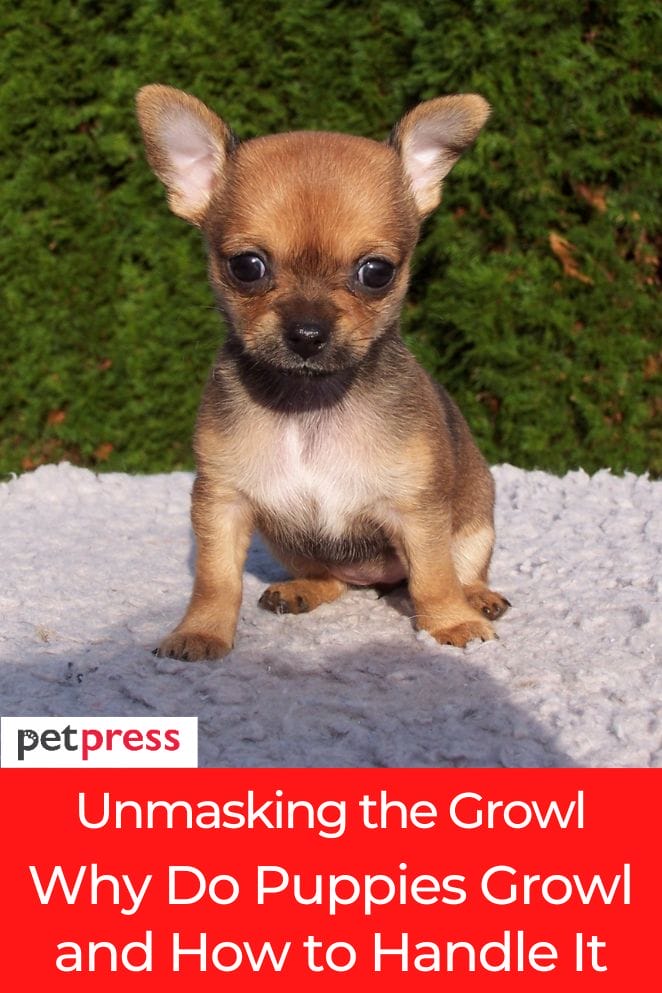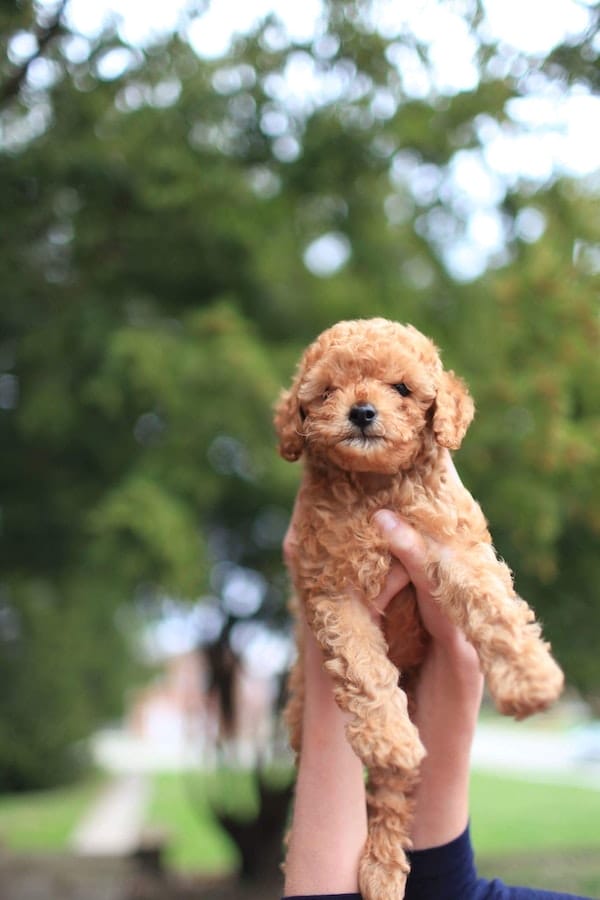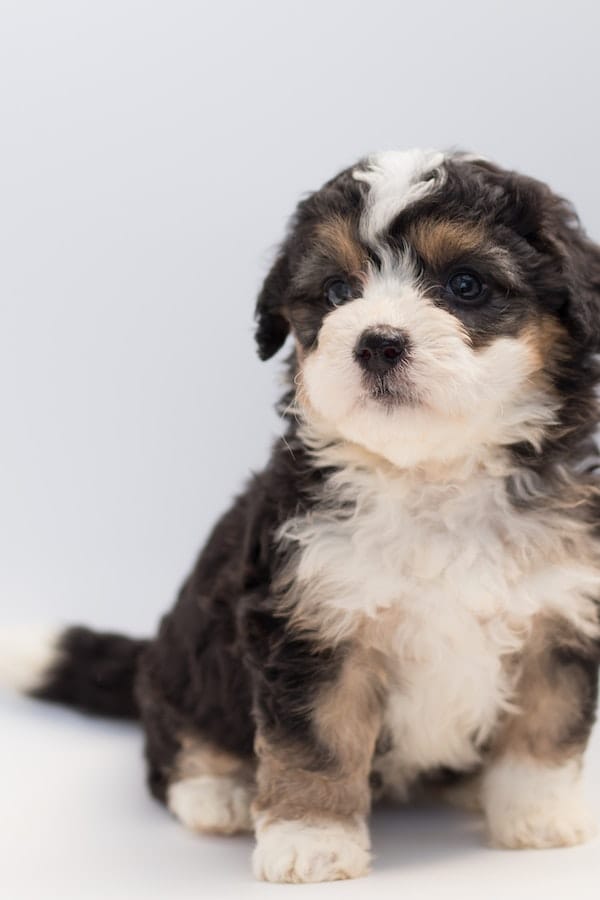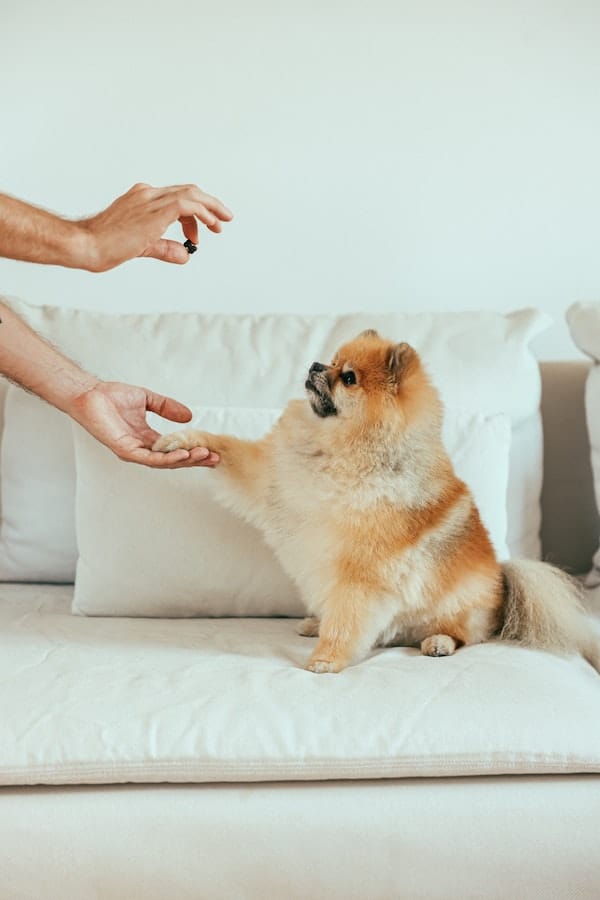
Ah, puppies – those little bundles of joy overflowing with boundless energy.
Occasionally, they catch us off guard with a low, somewhat intimidating growl!
If you’re a new puppy parent or contemplating the idea, you’ve likely encountered your adorable furry sidekick unleashing a formidable growl here and there.
But fear not; it’s not as worrisome as it may initially seem.
In this piece, we’re diving into the captivating world of puppy growling.
We’ll explore the underlying reasons for this behavior and provide you with some invaluable insights on how to handle it with utmost care and understanding.
Why Do Puppies Growl?

Puppy growling is a natural behavior rooted in their evolutionary history.
It’s their way of communicating their feelings and needs, which can vary widely. Here are some common reasons behind those adorable yet perplexing growls:
Communication
Puppies, lacking the ability to converse in our human language, heavily rely on non-verbal cues and vocalizations to convey their feelings.
Growling is a prominent means through which they express themselves.
This intriguing vocalization can signal various emotions, including excitement, playfulness, or a simple attempt to grab your attention.
It’s their way of engaging with the world around them and connecting with you.
Protection
Puppies possess a natural instinct to safeguard their territory and their beloved humans.
When they perceive a potential threat or intrusion, they may instinctively resort to growling as a warning signal.
This protective behavior is deeply ingrained in their genetic makeup, reflecting their ancient ancestors’ survival strategies.
Pain or discomfort
Sometimes, you’ll notice your puppy growling, and this could be a sign that something is amiss.
It’s like a distress signal, indicating that your furry companion might be in physical pain or discomfort.
If your little friend is injured or not feeling their best, they may resort to growling when you try to touch or approach them.
It’s a crucial cue that demands immediate attention and a thorough check-up to ensure their overall well-being.
Fear
Fear is indeed a potent catalyst for puppy growling.
When puppies encounter situations or individuals they perceive as intimidating or frightening, it often prompts them to employ growling as a form of self-defense or a way to express their unease.
Effectively comprehending and dealing with the root cause of their fear is pivotal in helping these little ones regain a sense of safety and security.
Possessiveness
Possessiveness is a trait not unique to puppies but common among many creatures.
Our furry friends can indeed exhibit possessiveness when it comes to their treasured possessions, whether it’s a beloved toy, a delectable meal, or a snug resting spot.
In such instances, their choice to growl serves as a declaration of ownership, a way of expressing, “This belongs to me, and I’m not inclined to share at the moment.”
It’s a completely natural behavior that, with the right approach to training and socialization, can be effectively managed.
Play
Playtime is a significant part of a puppy’s life, and they often incorporate growling into their play interactions.
This playful growl is typically accompanied by other joyful behaviors, such as wagging tails, exuberant bounding, and wide-open mouths.
It’s a way for them to engage in mock battles with their littermates or human companions, strengthening their social and physical skills.
Resource guarding
Puppies may also growl when they are guarding valuable resources like food, toys, or a comfortable resting place.
This type of growl can escalate into more aggressive behaviors like snapping or biting if the perceived threat persists.
It’s essential for puppy parents to work on this behavior early on through training and desensitization to ensure a safe and harmonious home environment.

What to Do if Your Puppy Growls
Now that we understand why puppies growl, let’s talk about how to handle it effectively:
Stay calm
It’s paramount to maintain a composed demeanor when dealing with your growling puppy.
Avoid the temptation to scold or punish them for this natural behavior.
Instead, take a deep breath and focus on uncovering the underlying cause of their discomfort or agitation.
Assess the situation
Take a closer look at the circumstances when your puppy begins to growl.
What led to this reaction?
It might be linked to fear, possessiveness, playfulness, or a multitude of other elements.
Grasping the fundamental cause is the initial stride toward addressing the matter effectively and adjusting your approach accordingly.
Consult a professional
In instances where growling becomes excessive, worrisome, or difficult to manage, seeking guidance from a veterinarian or an experienced dog trainer is a wise move.
These experts can conduct a thorough assessment to determine whether there’s an underlying health concern or a deeper behavior problem that requires attention.
Their expertise can be invaluable in ensuring the well-being and harmonious integration of your puppy into your home.
Tips for Handling Puppy Growling

Here are some practical tips to manage puppy growling:
Socialization
To minimize fear-based growling in your puppy, engage in proactive socialization efforts.
Introduce your young pup to a diverse range of people, animals, and situations early on.
This exposure helps them become more accustomed to novel experiences and reduces the likelihood of reacting with fear-induced growling in unfamiliar situations.
Positive reinforcement
Utilize the power of positive reinforcement as a cornerstone of your training approach.
When your puppy exhibits desired behavior, especially in challenging circumstances, employ treats and enthusiastic praise to reinforce their good choices.
This not only strengthens their positive associations with specific actions but also builds trust and a deeper connection between you and your four-legged friend.
Training
Consider enrolling your puppy in obedience classes to instill essential commands like “leave it” or “drop it” into their repertoire.
These commands are invaluable tools in preventing possessiveness-related growling by teaching your pup how to relinquish items or cease undesirable behavior when instructed.
Give space
When your puppy resorts to growling due to discomfort or unease, it’s crucial to respect their boundaries.
Avoid pushing them into interactions or situations they find overwhelming.
Instead, create a safe and quiet space where they can retreat and decompress, allowing them the time and autonomy they need to feel at ease.
Conclusion
To sum it all up, it’s crucial to acknowledge that puppy growling is a completely natural behavior with multifaceted intentions.
Developing an understanding of why puppies growl and mastering the art of managing it with patience and affection are essential for nurturing a loving and harmonious connection with your furry companion.
It’s worth bearing in mind that growling is just one aspect of your puppy’s diverse communication toolbox, and with the right guidance and support, you can steer them toward evolving into a well-adjusted and exuberantly joyful dog.
FAQs
Yes, playful growling is quite common among puppies. It’s their way of expressing excitement and engagement.
Instead of forcefully taking the toy, try trading it for a treat or another toy. This can help your puppy learn that giving things up results in positive outcomes.
If your puppy’s growling is excessive, aggressive, or accompanied by other concerning behaviors, it’s best to consult a professional for guidance.


GIPHY App Key not set. Please check settings